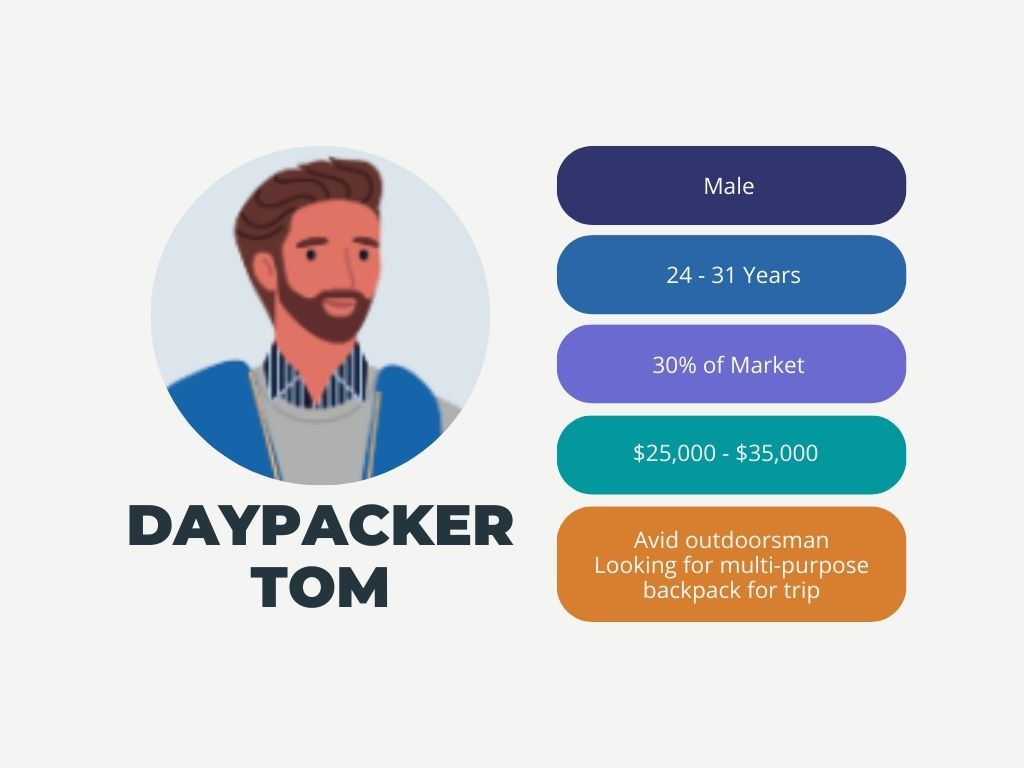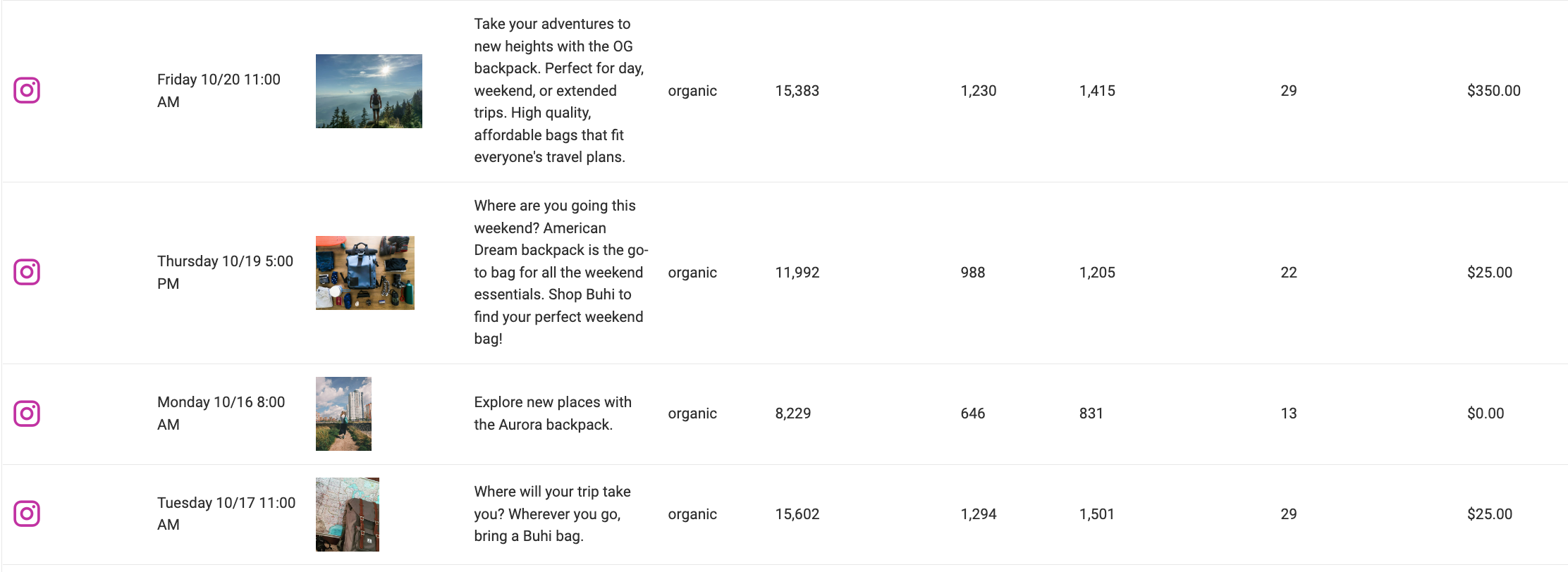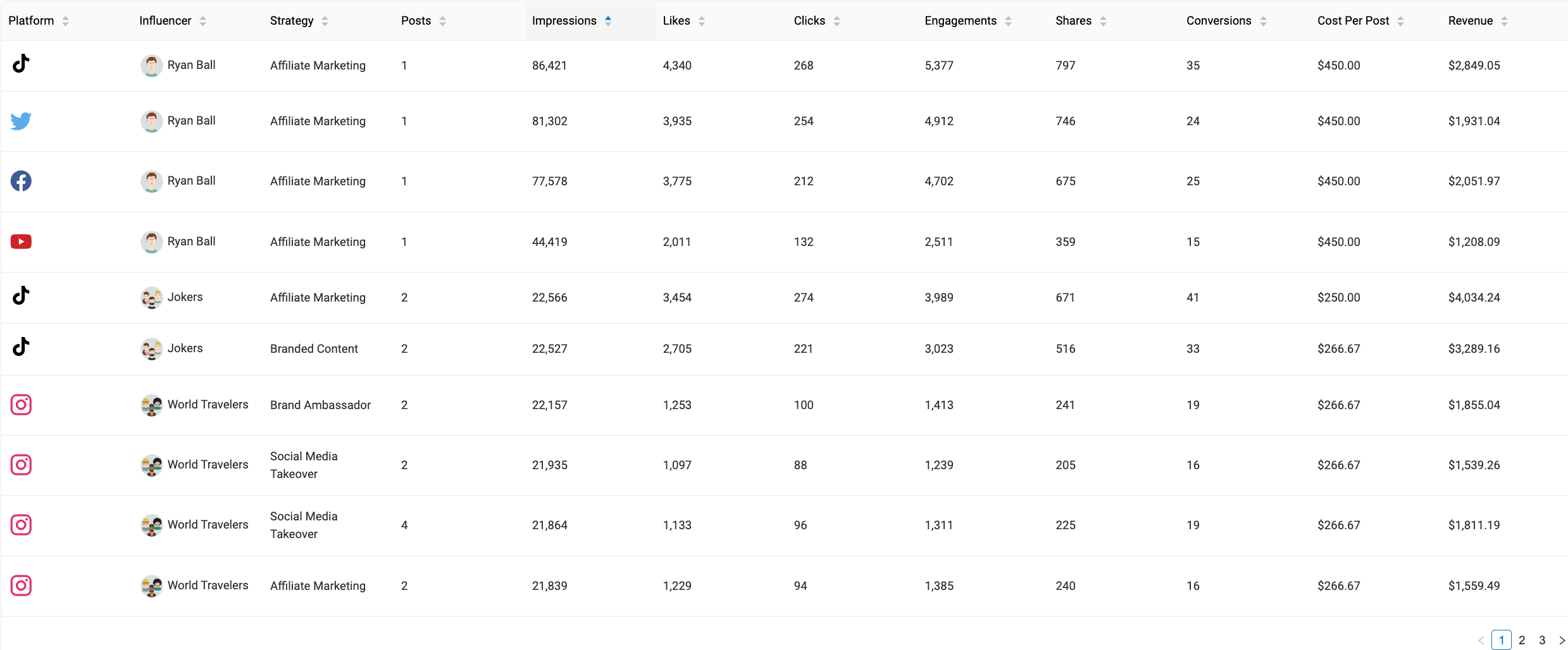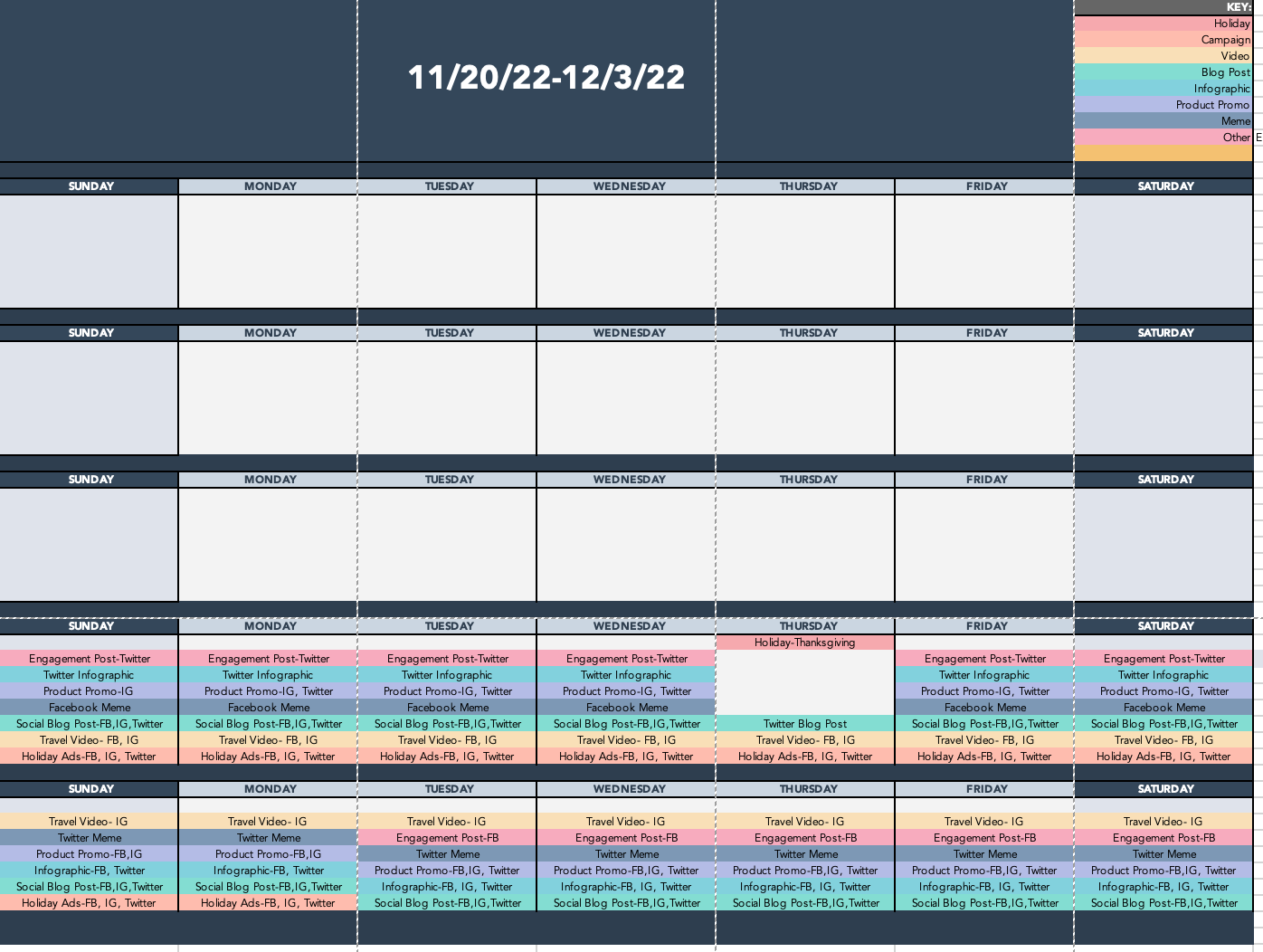Stukent Simulation: Social Media Simternship
As the semester ends, I want to reflect on the Social Mimic simulation for my Social Media Strategies class. This was a huge part of the class and a valuable “hands-on” experience, and I want to reflect on what I learned, what I liked and disliked, and my overall thoughts.
Buhi is a fictional e-commerce company that specializes in selling durable, high-end bags at affordable prices. We worked as a social media manager producing and analyzing content through Buhi’s social media accounts. The rounds included creating organic and paid posts, as well as working with influencers.
During the simulation, we were able to choose:
- Our buyer persona
- Social platforms
- Times and days for posting
- Media and copy for posts
- Ad budget
- Influencers
Buhi Buyer Persona
One of the biggest tasks for this simulation was determining the buyer persona. A buyer persona is a description of someone that represents your existing or desired audience. This required me to look at the company’s brand, mission, and values to see if any buyer personas matched those criteria. Finding and using a buyer persona is very important because you want to find the best target audience that will turn into customers, and this helps you understand your customers and their needs.
I chose Daypacker Tom as my buyer persona for the simulation because his demographics and interests seemed to match the company the best. Later, I did add City-Hopper Sue as an additional buyer persona because her interests were similar to Daypacker Tom, and I felt the content would reach and engage with a wider audience. I found that the content produced for Daypacker Tom did better overall and was easier to create than the content for City-Hopper Sue. So, most of this discussion will relate to the results from content produced for Daypacker Tom.

Social Platforms and Posts
I chose Facebook and Instagram to post my content. I did experiment with Twitter and TikTok but didn’t feel it fit my demographics and did not produce good results.
Facebook: I found Facebook to have “ups and downs” as far as what content worked well on the platform. Some rounds I would get good results, while others I flopped.
What content worked well on the platform:
- Videos
- Sale Ads
- Blogs
- User Generated Content

Videos outperformed any other content on this platform. Some of my videos reached an engagement of 55,588 and a revenue of $35,880. Other content that produced very well was user-generated content with Buhi ads included.
The best dates and times to post content:
- Thursday 9AM
- Friday 9AM
- Saturday 12PM
Instagram: Throughout the simulation, Instagram performed much better than the other platforms. It was rare that content produced badly on the platform.
What content worked well on the platform:
- User-generated content
- Engagement posts
- Sale ads
- Promo codes
- Infographics
- Blogs

User-generated content produced very well on this platform, especially when the content tagged the source. I also found engagement posts like “Tag your travel buddy…” or “Comment your favorite hike…” produced well and increased engagements.
The best dates and times to post content:
- Tuesday 11AM
- Thursday 8AM & 5PM
- Friday 11AM
I was very happy with the results I got from these platforms. City-Hopper Sue had a mix of content that worked well and some that didn’t, but most of the content produced that did well was targeted to Daypacker Tom.
Influencers Round
Rounds 7-9 introduced us to working with influencers. I picked influencers that I felt reflected my buyer persona and Buhi the best. In all three rounds, I chose micro-influencers and only used a macro influencer for round 5. I didn’t choose a mega influencer because they are too expensive and less authentic. I found micro-influencers to work best because they are less expensive and have higher engagement and conversions. Most of the micro-influencers took my first offer which was easy, but I had trouble getting macro-influencers to accept my bids and some of them stopped working with me. Each influencer had different platforms they used, and I didn’t like that some of the influencers I thought fit the buyer persona best were producing better results on platforms I wasn’t using.
The influencers I worked with:
- Macro: Ryan Ball
- Micro: World Travelers, Foodies, Jokers
I used a mixed strategy of Affiliate Marketing, Brand Ambassador, Social Media Takeover, and Branded Content for those three rounds. I wanted to experiment with each strategy to see what produced best.
Overall, I had the best results with Ryan Ball, World Travelers, and Jokers for my impressions and engagements. Instagram performed the best during these rounds and TikTok was second. I was surprised to see TikTok performed well since that was a platform, I had tried but didn’t succeed in using.

Resources I Used
Some of the resources I utilized to help in the simulation:
- Stukent Essentials of Social Media Marketing textbook
This helped me determine what content would work best on each platform, how to use features of the platform, how to create a content strategy, and the components of a post. - Simulation resources-Social Media Audit, Social Media Marketing Trends, and Influencer tips
This included demographics for each platform, best times and days to post, marketing trends and best practices and a description of each influencer categories. These helped on many portions of the simulation and were a good resource that I utilized many times. - HubSpot Social Media Marketing course & content calendar
Working through the course added an additional resource that helped in creating the content used in the simulation. The content calendar was a great resource to help plan and organize content for the simulation.
What I Liked
I really liked the simulation and found each week to be a new challenge, some of the main things I liked throughout the simulation include:
- Influencer Rounds
I had better luck on the influencer rounds than other rounds and found when it came to choosing strategies and bidding it was an easier process. - Writing Content
I liked the process of writing the copy for each post. Although it took up a lot of my time, it helped me understand how much time and effort it takes to create good content that will resonate with your audience. - Social Media Content Calendar
The content calendar was a great resource to help organize the content for the simulation. Creating content two weeks in advance really helped keep me ahead of the content creation. I plan to utilize a content calendar for any future social media jobs.

Where I Struggled
Overall, I did enjoy the simulation, but a few features of the simulation I either struggled with or didn’t like.
- Paid Social Rounds
I understand the importance of working with paid social posts, but I had difficulties with those three paid rounds. I had trouble understanding and using the ad budget for each platform. I was either too low or too high for the ad budget. I also didn’t like how I couldn’t pick the date or time like the organic posts. - Repurposing Content
I had a hard time successfully reusing content. One of my videos did well on Facebook, and when I reused it two weeks later, the video did not produce good results. - Overload of Content
I should’ve kept better track of how much content I was posting each week and from which platform. I feel that I overloaded the platforms with content on some rounds but didn’t post enough on other rounds. I wish the analysis review in the simulation let us look at the post details and was more of a calendar view that showed us the days we posted content.
What I Would Do Differently
- Use One Buyer Persona
I would choose one buyer persona and stick with it. My content was all over the place because I was trying to make content for two buyer personas with different demographics but similar interests. - Cut the “Fluff” Content
I would only produce the type of content that worked for each platform. Although the simulation is for experimenting, I wish I would’ve stuck to what was performing well for each platform and incorporated one new type of content each round. For one of the rounds, I was just throwing out whatever content I thought might work or what worked in previous rounds, not considering the resources or analytics. - Use Content Calendar More
It was beneficial in creating the content ahead of time and having everything organized. I would use it from the beginning and continue to use it for the rest of the rounds that I needed to produce content.
Final Thoughts
My total ROI was $229,681.99 with $34,022 in expenses.
I enjoyed working through the simulation and found it to be a valuable tool. I enjoyed the weekly discussion boards and class discussions as we worked through the rounds. Through those discussions, I found new ideas, and solutions to challenges I faced, and it was nice to see how others solved the issues they ran into or any suggestions they had. We were able to make mistakes and experiment with each round to see what did or didn’t work. I think this simulation was a perfect hands-on way to experience how social media marketing works.